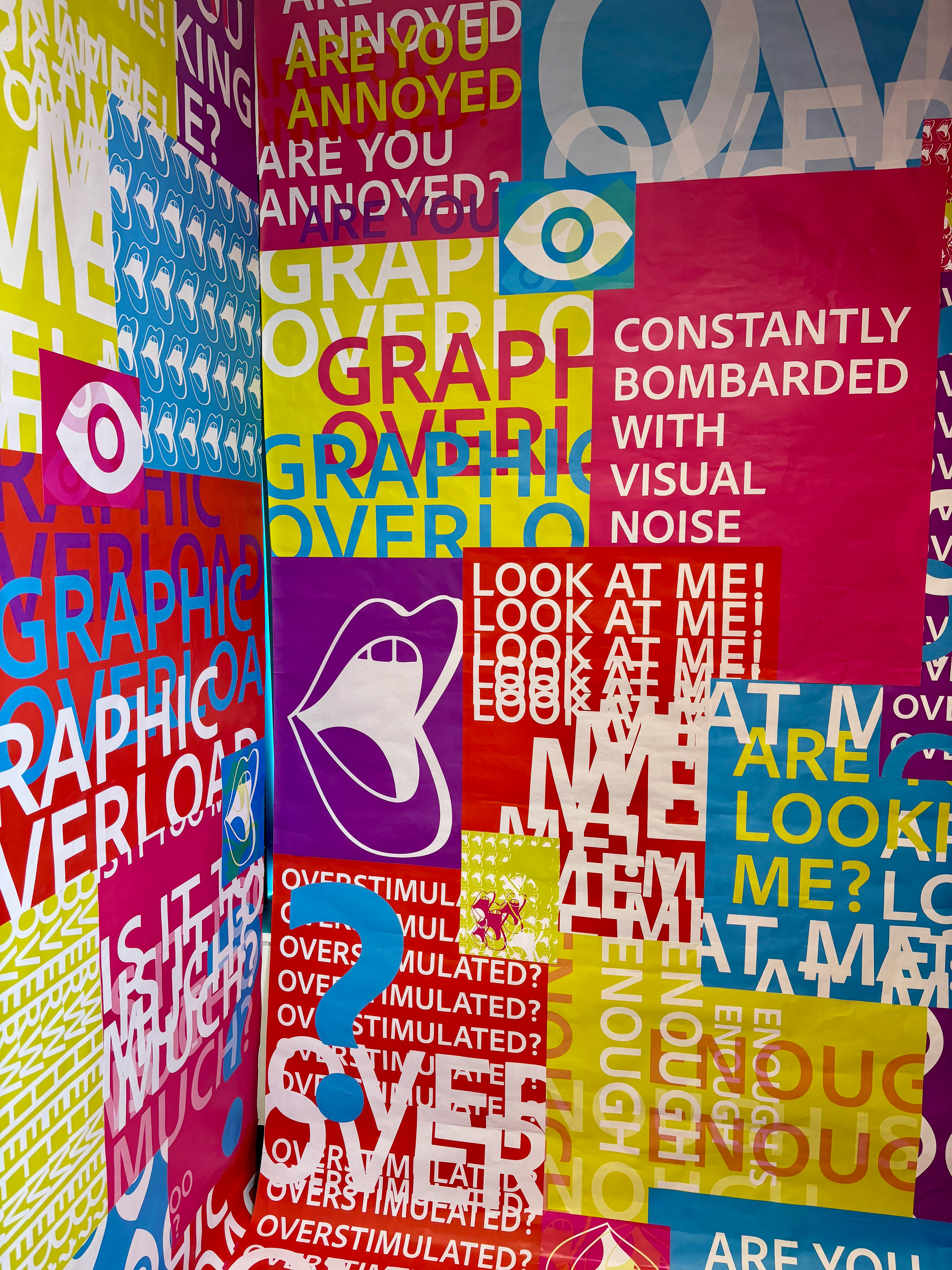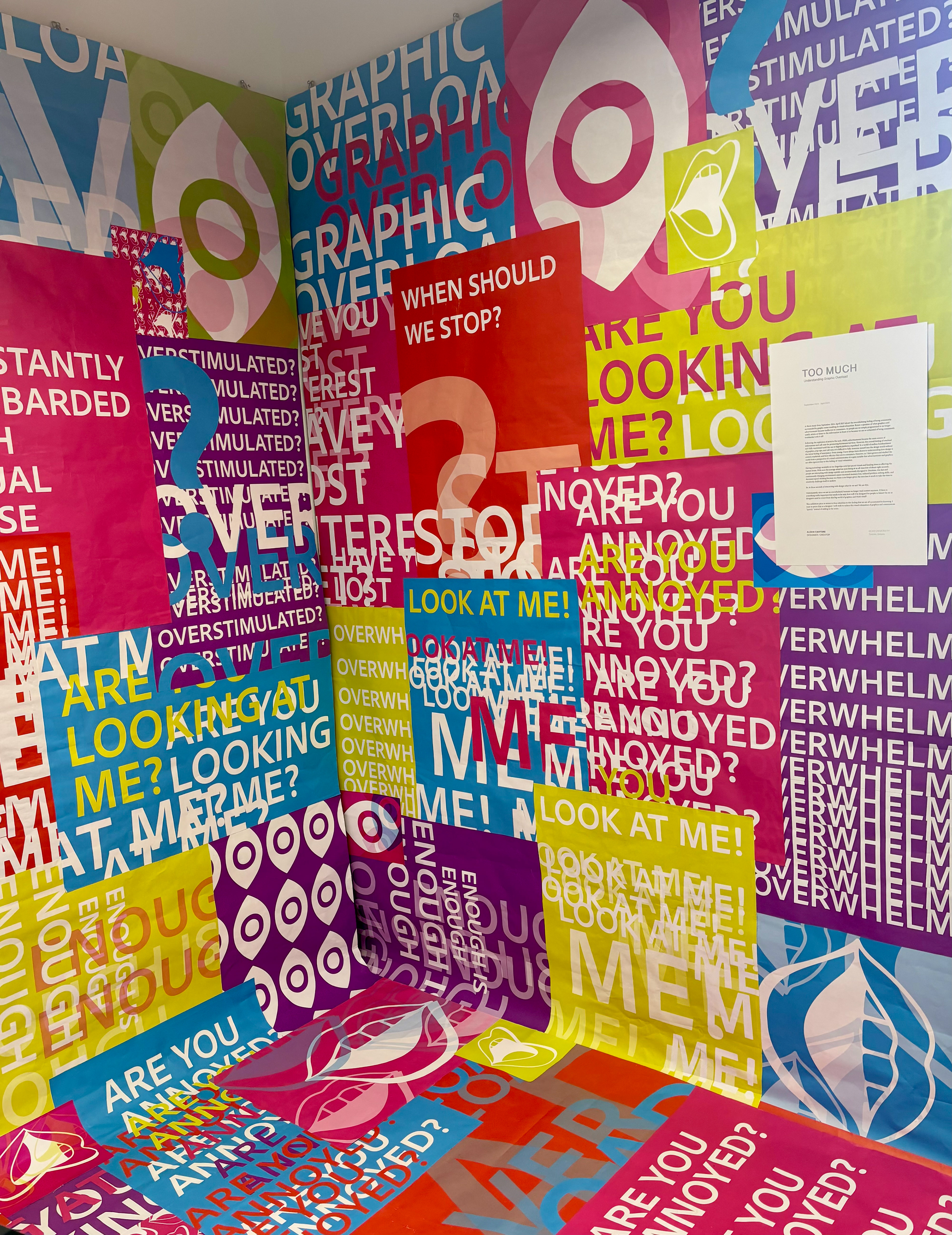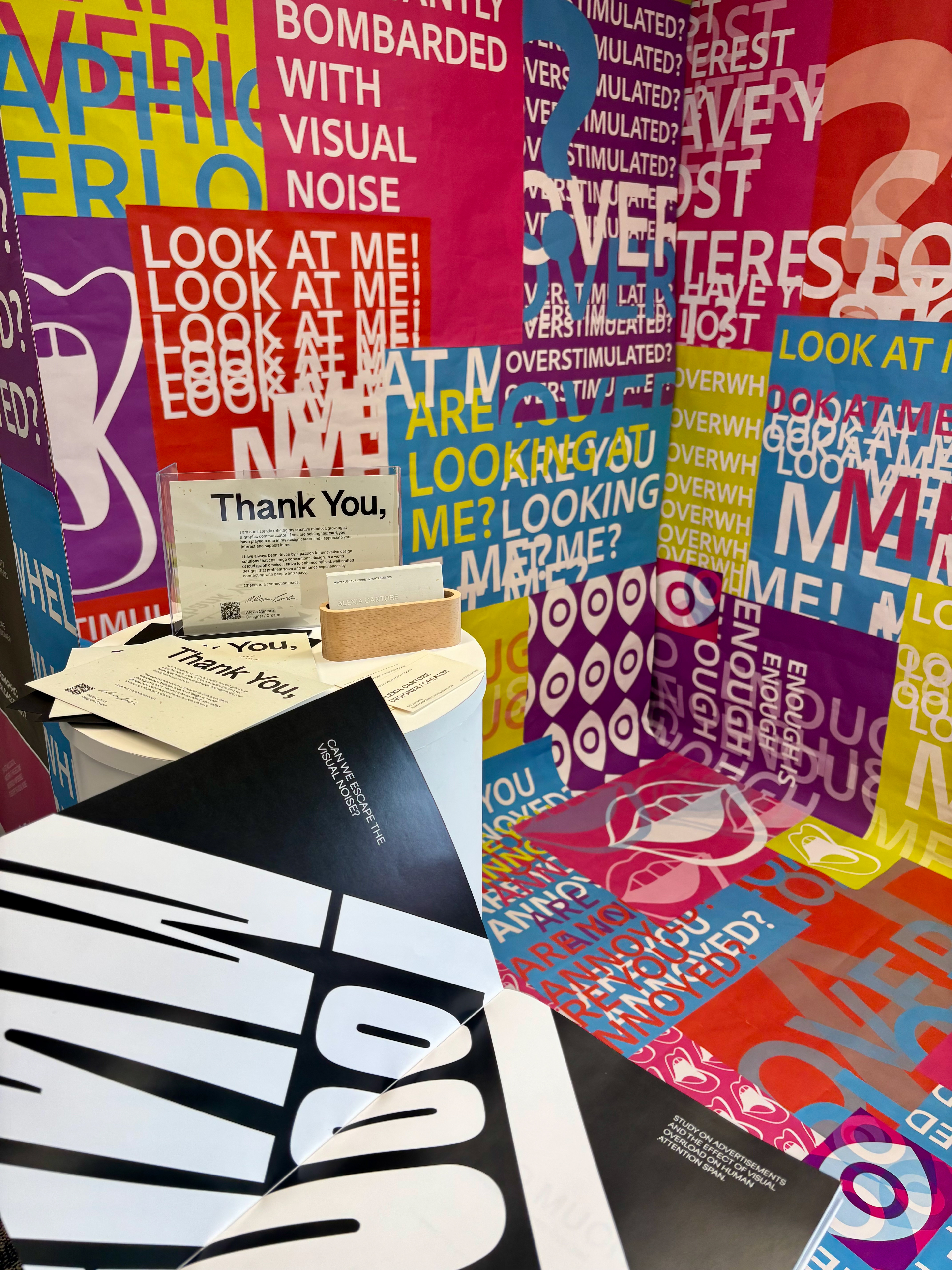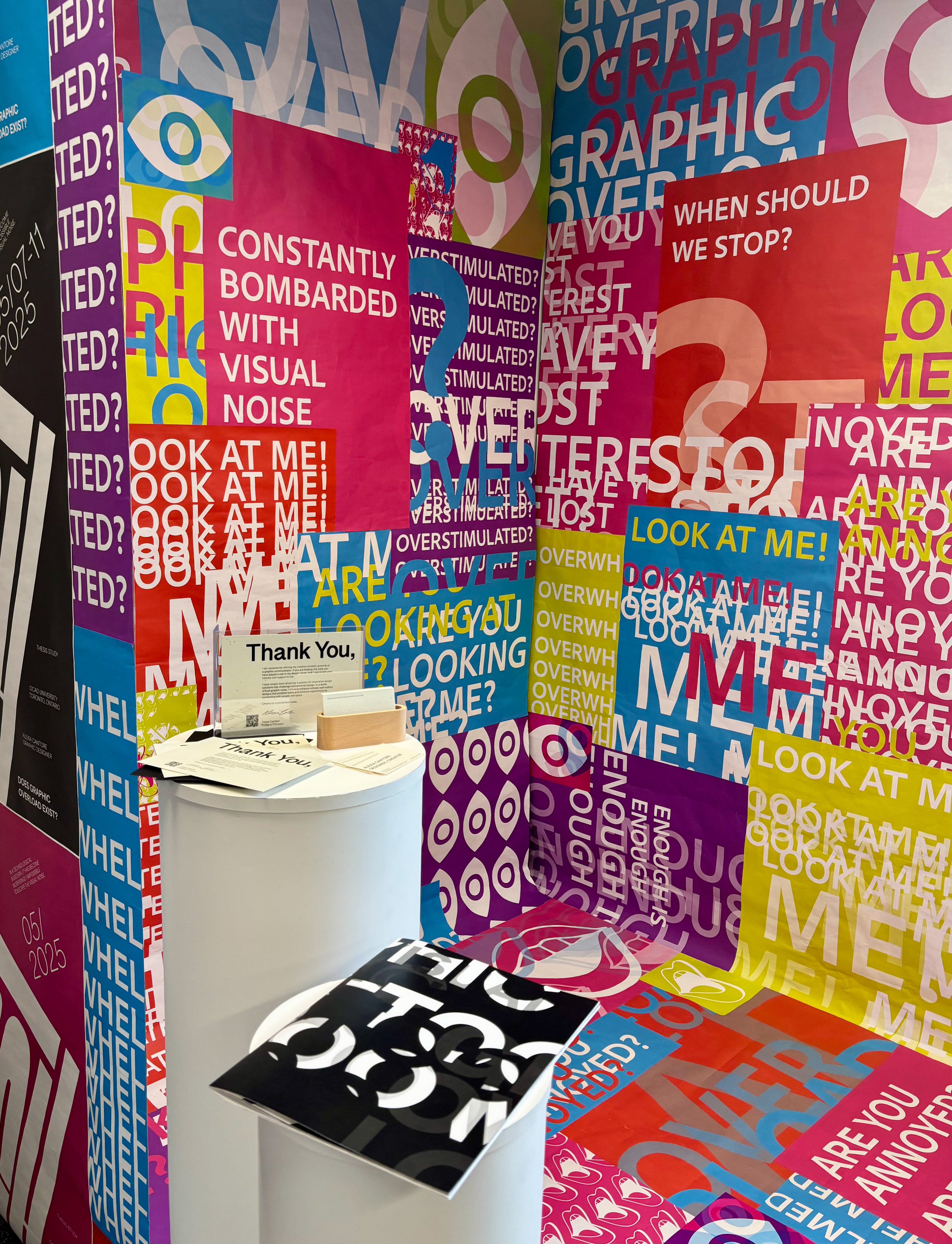"Too Much: Understanding Graphic Overload" is a thesis project spanning from September 2024-April 2025. The study focuses on understanding graphic overload and the feeling of being consistently bombarded with visual noise resulting in exhaustion. Raises a question of when graphics and advertisements become ineffective to consumers. As people are we simply programmed to no longer watch, retain, or listen to information in front of us because we are so exhausted of being consistently bombarded with it all? The final dimensions span 6ft by 6ft by 9 ft and is created using printed poster.





TOO MUCH
Following the explosion of print in the early 1920’s, advertisements became the main source of information and call-outs for promoting businesses/services. However, this overall feeling of overload isn’t fully maximized until the use of digital platforms expedited. In a world of endless bombardment of graphics, pop-ups, and call outs; it is difficult to fully immerse oneself into the design world without the initial feeling of annoyance. From young, I have always been drawn to understanding how design is created, marketed, and how effective they are to consumers. However, as I have grown and studied the world from a perspective of a visual communicator, it is quite notable that graphics are often ignored due to this feeling of visual exhaustion.
Having technology available at our fingertips with fast-paced visuals and loading times is effecting the human brain. With now the average attention span being at an all-time low of about eight seconds, people are interacting with design quickly and unconsciously disregard it. Overtime, this fast and continuously changing environment causes increased memory loss, reduced problem-solving skills, and decreases speed thinking because our brain is no longer given the exercises it needs to take the time to intuitively challenge itself to analyze.
So, in these seconds of interacting with design what do we see? We see this.
This final immersive experience is displayed at OCAD University's 110 annual GradEx hosted May 7-11 2025. The public able to take photos and experience the full effect.
PROCESS REFLECTION
Process document that includes initial research and analysis as to why I decided to analyze this specific topic and create this outcome. the final book measures at a size of 9 by 12 inches and is printed into a short flip book displayed alongside the exhibit. Through research, I was particularly interested in raising awareness for this growing concern of visual exhaustion and how myself as a designer can look at design differently to bring more thought to its outcomes.
PROMOTIONAL POSTERS
Promotional exhibition posters that promote the exhibit topic and the installation piece. Final posters measure at a size of 24 by 36 inches and are printed and pasted to develop a graphic pallet and theme for the exhibition.














